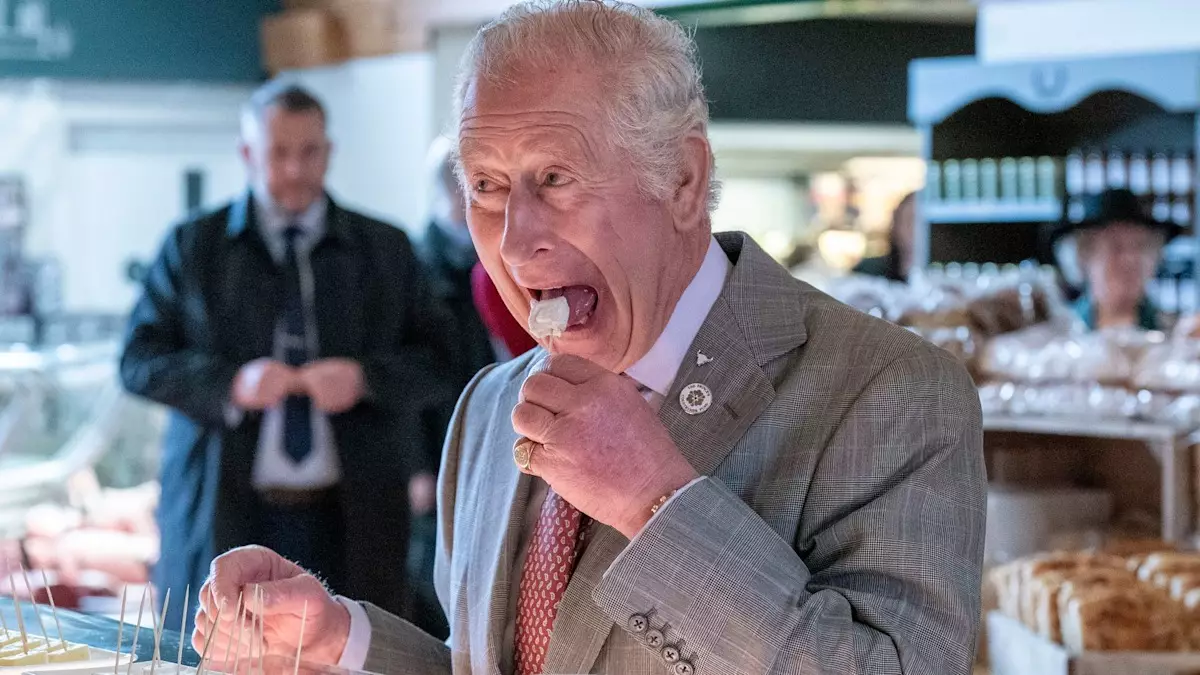Easter Sunday holds a significant place in royal culture, rippling through the annals of history from the reign of Queen Victoria to the modern royal family. This day transcends merely being a Christian holiday; it encapsulates family values, spiritual devotion, and sumptuous culinary experiences. The royal family’s Easter observance at St. George’s Chapel in Windsor Castle is a vivid reminder of the blend of faith and family, offering insights not only into their traditions but also into their collective warmth and unity. It is an occasion steeped in a rich tapestry of shared stories, laughter, and the enjoyment of a carefully curated meal—a beautiful testament to how food can intertwine with familial ties.
The Gastronomic Gala of Easter
While much of royal dining remains shrouded in secrecy, insights from former royal chef Darren McGrady illuminate the culinary delights awaiting the family on Easter Sunday. This annual feast is a departure from the monarch’s normal protocol of skipping lunch. Here, the menu is defined not just by culinary excellence, but by symbolic significance. Central to Easter Sunday celebrations is a magnificent roast lamb, a dish that carries with it deep-rooted Christian symbolism. Elucidating this connection, lamb has long been associated with the ‘sacrificial lamb’ of the Old Testament, and also harkens back to the New Testament, wherein Jesus is referred to as the ‘Lamb of God.’ This practice infers a reverence that goes beyond mere dining, embodying a rich historical context within the royal family’s Easter celebration.
Aside from the roast lamb, the accompanying sides such as salads and various trimmings cater not only to nutrition but also to the taste preferences of different family members. It’s interesting to note that the late Queen Elizabeth II preferred her lamb well-cooked—a small detail that humanizes a figure often perceived through the lens of regal decorum.
The Intricacies of Tradition and Indulgence
Following the main course, the royal dessert lineup does not disappoint. The cheese board, featuring local delicacies such as Windsor Cheese, and the sweetness of white Windsor peaches provide a delightful contrast to the meal, inviting conversations and perhaps even nostalgia linked to these family favorites. The legacy of crafting hot cross buns for afternoon tea reveals just how important these traditions are. Not merely a component of sustenance, these buns symbolize both anticipation and the warmth of shared moments. The anecdote shared by McGrady about the late Queen being a “total chocoholic” adds a dash of individuality to the royal palate, painting a picture of relatable indulgences amidst the grandeur.
In stark contrast is King Charles III, whose aversion to chocolate has been noted, underscoring the range of preferences within the family. Yet even the King has been known to indulge in the joys of Easter lamb, suggesting that personal preferences meld seamlessly with overarching traditions during these family gatherings.
Family Celebrations and the Unwritten Bonds
Easter has also served as an occasion for Prince William and Princess Kate to connect with their children through egg hunts, fostering joy and laughter that resonates throughout the family unit. Such activities remind us of the simplistic pleasures of familial bonds, resonating beyond their royal status. Even in moments of adversity, like Kate’s recent health challenges, the family’s commitment to maintaining their holiday traditions speaks volumes about resilience and mutual support. The Wales household’s anticipated return to their beloved Easter routines in 2024 reflects not just hope but a strong desire to reclaim shared familial experiences.
The collective joy surrounding these events offers a peek into a world that, while adorned in opulence, still values simplicity and connection. It beckons to each of us the reminder that whether in grand palaces or humble homes, Easter’s true essence is captured in love, laughter, and the joy of togetherness around a table laden with both symbolic and delicious fare.

